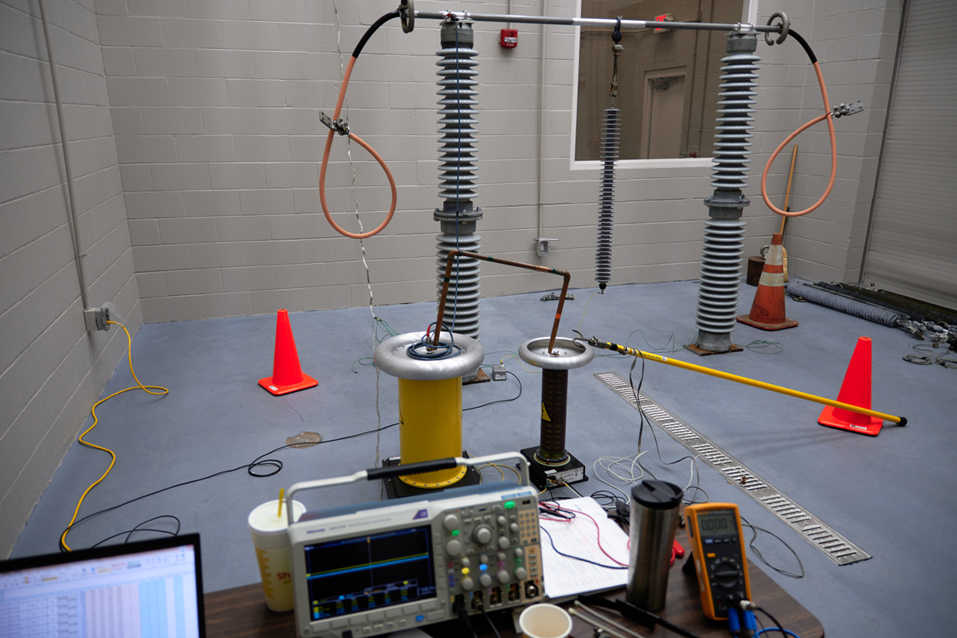Objective
The project objective is to determine how to optimize the maintenance of various substation assets and maximize their service lives. Equipment under test varies by project year. Research focuses on equipment that is not typically designated as a major asset but still affects the reliability, safety, and longevity of substations. Examples of such assets include battery banks, disconnect switches, instrument transformers, and surge arresters.
Research Value
This research can provide the following value:
- Provide guidance regarding asset life cycles, including specific assets such as monitoring of surge arresters and battery systems
- De-risk novel technologies associated with asset inspection, monitoring, and assessment via robotics
- Support utilities in making informed decisions about substation ratings, including improved thermal models to optimize power output and guidance for applying this information in overall transmission system ratings
Planned 2025 Research

Continue development of surge arrester sensor to monitor pending arrester failure: This multi-year task evaluates the long-term durability of EPRI’s surge arrester failure sensor. The approach involves the monitoring of new, aged, and failing arresters in the controlled, 138-kV research substation environment to increase the sensor’s data set for future analysis. This allows for examination of the impacts of a substation environment on sensor performance while enabling easy access to the sensors if problems occur.

Assess performance of battery monitoring systems: Assess battery monitoring systems from several manufacturers. Use bench testing and battery emulators to create repeatable test plans that allow for comparison between systems that may otherwise require different battery chemistries or configurations.

Evaluate robot chassis for applicability to substation inspection: This research explores the feasibility of autonomous mobile robots for substation inspections, investigating their potential to complement human inspectors, be shared across substations, operate with minimal supervision, be portable, and ultimately determine if they currently complement or supplement human inspectors for improved efficiency, safety, and reliability in substation inspections. This task expands on work from 2024 by evaluating additional technologies.

Issue updates to EPRI’s Increased Power Flow Guidebook for 2025: This effort advises utilities on how to calculate and apply ampacity ratings to substation equipment, pursuant to NERC requirements and FERC Order 881, which shifts the industry from ambient adjusted ratings that vary with air temperature to dynamic line ratings (DLRs) that vary with wind speed. In addition to applying DLRs to bus ratings, the new designations may result in the most limiting series element designation applying to station equipment, instead of the transmission line, for many circuits in 2025.
Supplemental Projects
3D Scanning Technologies (with applications to robotics and drones)
Objective
Evaluate the capabilities, limitations, and use cases for 3D scanning technologies in substation applications
Value
- Experience with emerging 3D scanning technologies.
- Experience with newer visualization techniques for 3D data.
- Objective evaluations for substation applications.
- Knowledge to make informed decisions related to acquiring, deploying, and using 3D scanning technologies and data.
Tasks
- Document requirements of 3D scanning technologies for substation use cases.
- Scout, prioritize, and acquire solutions.
- Perform testing with staged scenarios and independent control to evaluate the value and limitations of 3D scanning workflows.
- Analyze the results, observations, and lessons learned.
- Document the project results and host periodic project updates.
Additional Information

3D Scanning Technologies: Substation Applications This project leverages the latest in commercial-off-the-shelf mobile mapping, reality capture, and 3D scanning technologies.
Failure Analysis Services
EPRI offers utilities the ability to send in failed balance of the substation components (arresters, switches, CTs, PTs, CCVTs) to ascertain the root cause of failure. This process typically takes the following form:
- Photo Documentation - Capture visual evidence prior to any unit disassembly
- Electrical Testing – Perform diagnostic tests to determine status of the component (this step may not be possible to perform depending on the condition of the unit)
- Teardown - Systematic disassembly of the equipment to identify cause of failure
- Analysis - Findings reviewed, further laboratory testing, and potential failure modes identified
- Report and Technical Transfer - The findings of the investigation are reported and communicated to the utility via webcast or other method

LFP Battery Performance in Substations Applications (LifePO4 Evaluation)
Objective
- Evaluate LiFe PO4 batteries at typical substation voltages/amp-hour sizing and extreme temperatures
Value
- Improve substation resiliency
- Improve worker safety
- Extend time batteries can keep a station in-service during an outage
Tasks
- Thermal runaway analysis
- Design concepts to mitigate thermal release
- Charging rate, BMS accuracy

Additional Information
Reach out to Colleen Konsavage on matters related to balance of the substation assets.